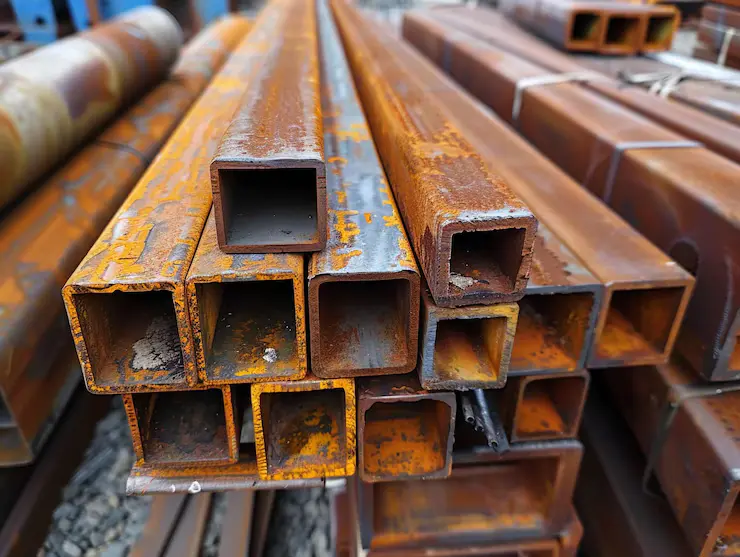Introduction to Matter
Matter is the fundamental substance that constitutes the physical universe. Everything around us, from the air we breathe to the objects we touch, is composed of matter. Matter is defined as anything that has mass and occupies space. It is composed of tiny particles called atoms, which are the basic building blocks of all chemical elements. These atoms can combine to form molecules, which in turn can combine to create more complex substances. The study of matter and its properties is a foundational aspect of physical science and is essential for understanding the natural world.
Table of Contents
The Concept of Matter
At its core, matter is anything that occupies space and has mass. This simple yet profound definition underlies much of the scientific exploration into the nature of substances. Matter exists in various forms and can undergo changes from one form to another under different conditions. The fundamental building blocks of matter are atoms, which consist of protons, neutrons, and electrons. Atoms combine in various ways to form molecules, the basic units of compounds.
Definition of Matter
Matter is defined as anything that has mass and occupies space. This definition encompasses a wide range of substances, from the air in the atmosphere to the water in oceans, to the solid earth beneath our feet. The concept of matter is central to all of physical science, as it relates to everything that has a physical presence in the universe.
Atoms: The Building Blocks of Matter
Atoms are the fundamental units of matter. Each atom consists of a nucleus, containing positively charged protons and neutrally charged neutrons, surrounded by negatively charged electrons. These electrons orbit the nucleus in regions called electron shells. The number of protons in the nucleus determines the element of the atom, while the arrangement of electrons determines how atoms will interact with each other.

Atoms can combine to form molecules, which are the smallest units of chemical compounds. For instance, two hydrogen atoms combine with one oxygen atom to form a water molecule (H₂O). Molecules can be simple, like oxygen (O₂), or complex, like DNA, which is composed of thousands of atoms.
The States of Matter
Matter exists in different forms or states, each with distinct characteristics. The three most commonly encountered states of matter are solid, liquid, and gas. However, under certain conditions, matter can exist in other states, such as plasma and Bose-Einstein condensates. Each state of matter has unique properties that are determined by the arrangement and movement of its particles.
Solid State
Solids are one of the three fundamental states of matter. In a solid, the particles (ions, atoms, or molecules) are tightly packed together in a fixed, orderly arrangement. The forces between the particles in a solid are so strong that the particles can only vibrate in place and cannot move freely. This gives solids their characteristic properties of a definite shape and volume.


Properties of Solids
- Definite Shape and Volume: Solids have a fixed shape and volume that do not change unless force is applied, such as when a solid is broken or cut.
- Rigidity: The strong intermolecular forces in solids result in a rigid structure that resists deformation.
- Low Compressibility: Solids are incompressible because the particles are already tightly packed together, leaving little room for compression.
- Thermal Expansion: Solids expand when heated, but this expansion is usually minimal compared to liquids and gases.
Examples of Solids
- Iron: A metal with high density and strong intermolecular forces, used in construction and manufacturing.
- Diamond: A crystalline form of carbon, known for its exceptional hardness and optical clarity.
- Ice: The solid form of water, which forms when water is cooled below 0°C.

Liquid State
Liquids are another fundamental state of matter, characterized by a definite volume but an indefinite shape. In a liquid, the particles are still closely packed, but they have enough energy to move around and slide past each other. This allows liquids to flow and take the shape of their container.


Properties of Liquids
- Definite Volume: Liquids have a fixed volume that does not change regardless of the container they are in.
- Indefinite Shape: Liquids take the shape of their container, filling the bottom first.
- Moderate Compressibility: Liquids are slightly compressible, but much less so than gases.
- Thermal Expansion: Liquids expand more than solids when heated but less than gases.
Examples of Liquids
- Water: A universal solvent, essential for life, with unique properties like high specific heat and surface tension.
- Mercury: A metal that is liquid at room temperature, used in thermometers and barometers.
- Oil: A viscous liquid that does not mix with water, used in cooking and lubrication.
Gaseous State
Gases are the most energetic of the three common states of matter. In a gas, the particles are far apart and move freely in all directions. The intermolecular forces in gases are very weak, allowing the particles to spread out and fill any container.


Properties of Gases
- Indefinite Shape and Volume: Gases have neither a fixed shape nor a fixed volume. They expand to fill the entire volume of their container.
- High Compressibility: Gases can be compressed much more easily than solids or liquids because of the large spaces between particles.
- High Thermal Expansion: Gases expand significantly when heated.
Examples of Gases
- Oxygen: A vital gas for respiration, making up about 21% of Earth’s atmosphere.
- Carbon Dioxide: A greenhouse gas produced by respiration and combustion, and used in carbonated beverages.
- Helium: A noble gas lighter than air, used in balloons and as a cooling agent for superconductors.
Plasma: The Fourth State of Matter
Plasma is a state of matter that is not commonly encountered in everyday life but is prevalent in the universe. Plasma consists of highly energized particles, including ions and free electrons, and is created when a gas is heated to extremely high temperatures or subjected to a strong electromagnetic field.
Properties of Plasma
- Ionized Particles: Plasma is composed of ions and free electrons, giving it the ability to conduct electricity.
- High Energy: The particles in plasma have very high kinetic energy, resulting in unique properties like emitting light.
- Response to Magnetic Fields: Plasmas are influenced by magnetic and electric fields, which can be used to control and contain them.
Examples of Plasma
- Stars: Including our Sun, which is composed mainly of hydrogen plasma undergoing nuclear fusion.
- Neon Signs: Brightly glowing signs created by passing electricity through a gas, ionizing it into plasma.
- Auroras: Natural light displays in the Earth’s sky, caused by charged particles from the Sun interacting with Earth’s magnetic field.
Bose-Einstein Condensates: The Fifth State of Matter
Bose-Einstein Condensates (BECs) represent a unique state of matter that occurs at temperatures close to absolute zero. This state was first predicted by Satyendra Nath Bose and Albert Einstein in the early 20th century and was experimentally confirmed in 1995 by Eric Cornell and Carl Wieman.
Properties of Bose-Einstein Condensates
- Superfluidity: BECs exhibit superfluid properties, meaning they can flow without viscosity.
- Macroscopic Quantum Phenomena: Atoms in a BEC occupy the same quantum state, behaving as a single quantum entity.
- Near Absolute Zero: BECs form at temperatures just a fraction of a degree above absolute zero, where thermal motion is nearly nonexistent.
Examples of Bose-Einstein Condensates
- Rubidium BEC: Created by cooling rubidium atoms to near absolute zero, where they coalesce into a single quantum state.
- Superfluid Helium: Although not a true BEC, superfluid helium shares some properties with BECs, like frictionless flow.
Transition Between States of Matter
The three primary states of matter—solid, liquid, and gas—can transition from one to another by changing environmental conditions, such as temperature and pressure. These transitions are fundamental processes in nature and are described by various phase changes.

Melting and Freezing
- Melting: The process by which a solid becomes a liquid when it is heated above its melting point. For example, ice melts into water at 0°C.
- Freezing: The reverse of melting, where a liquid becomes a solid when it is cooled below its freezing point. Water, for example, freezes into ice at 0°C.
Vaporization and Condensation
- Vaporization: The process by which a liquid becomes a gas. This can occur through evaporation (at the surface of the liquid) or boiling (throughout the liquid).
- Condensation: The process by which a gas becomes a liquid when it is cooled. For example, water vapor in the air condenses into droplets on a cold surface.
Sublimation and Deposition
- Sublimation: The process by which a solid changes directly into a gas without passing through the liquid state. Dry ice (solid CO₂) sublimates into carbon dioxide gas at room temperature.
- Deposition: The reverse of sublimation, where a gas changes directly into a solid. Frost formation is an example of deposition.
Informative Table
The following table provides a summarized comparison of the key properties and examples of each state of matter. This table highlights the unique characteristics of solids, liquids, gases, plasmas, and Bose-Einstein condensates, offering a quick reference to understand their differences and behaviors.
| State of Matter | Properties | Examples |
|---|---|---|
| Solid | – Definite shape and volume – Rigid structure – Low compressibility – Minimal thermal expansion | – Iron – Diamond – Ice |
| Liquid | – Definite volume but indefinite shape – Moderate compressibility – Flows easily – Moderate thermal expansion | – Water – Mercury – Oil |
| Gas | – Indefinite shape and volume – High compressibility – High thermal expansion – Particles move freely | – Oxygen – Carbon Dioxide – Helium |
| Plasma | – Ionized particles – High kinetic energy – Conducts electricity – Influenced by magnetic fields | – Stars – Neon Signs – Auroras |
| Bose-Einstein Condensate (BEC) | – Superfluidity – Macroscopic quantum phenomena – Near absolute zero temperature | – Rubidium BEC – Superfluid Helium |
This table serves as a concise overview of the fundamental states of matter, illustrating the distinct properties and examples that characterize each state.
Conclusion
The study of matter and its various states is essential for understanding the physical world. From the rigid structure of solids to the free-flowing nature of gases, and the exotic properties of plasmas and Bose-Einstein condensates, matter exists in a multitude of forms, each with unique characteristics and behaviors. These states can transition from one to another under the right conditions, revealing the dynamic and interconnected nature of the physical universe. As science progresses, our understanding of matter and its states continues to evolve, offering new insights into the fundamental nature of reality.
Frequently Asked Questions (FAQs) about Matter
What is matter?
Matter is anything that has mass and occupies space. It is the substance that makes up all physical objects in the universe. Matter is composed of tiny particles called atoms, which are the basic building blocks of all chemical elements. These atoms can combine to form molecules, which in turn can create more complex substances. Everything around us, including air, water, rocks, and living organisms, is made of matter.
What are the three basic states of matter?
The three basic states of matter are solid, liquid, and gas. In the solid state, matter has a definite shape and volume, with particles that are tightly packed and only vibrate in place. In the liquid state, matter has a definite volume but takes the shape of its container, with particles that can move around each other. In the gaseous state, matter has neither a definite shape nor a definite volume, with particles that move freely and are far apart.
What are some examples of matter?
Examples of matter include:
- Solid: Iron, diamond, ice.
- Liquid: Water, mercury, oil.
- Gas: Oxygen, carbon dioxide, helium.
These examples demonstrate the different states of matter and their properties.
What is plasma, and how is it different from other states of matter?
Plasma is a state of matter that consists of highly energized particles, including ions and free electrons. Unlike solids, liquids, and gases, plasma does not have a definite shape or volume. It is created when a gas is heated to extremely high temperatures or subjected to a strong electromagnetic field, causing the atoms to ionize. Plasma can conduct electricity and is influenced by magnetic fields. Examples of plasma include stars, neon signs, and auroras.
What is a Bose-Einstein condensate (BEC)?
A Bose-Einstein condensate (BEC) is a state of matter that occurs at temperatures close to absolute zero. In this state, a group of atoms is cooled to near absolute zero, causing them to occupy the same quantum state and behave as a single quantum entity. BECs exhibit properties such as superfluidity, where the substance flows without viscosity. This state was first predicted by Satyendra Nath Bose and Albert Einstein and was experimentally confirmed in 1995 by Eric Cornell and Carl Wieman.
How do solids, liquids, and gases differ in terms of particle arrangement and movement?
- Solids: In solids, particles (atoms, ions, or molecules) are tightly packed in a fixed, orderly arrangement. The strong intermolecular forces keep the particles in place, allowing only vibrational motion. This gives solids a definite shape and volume.
- Liquids: In liquids, particles are still closely packed, but they have more freedom to move around each other. The intermolecular forces are weaker than in solids, allowing the particles to slide past one another. This gives liquids a definite volume but an indefinite shape.
- Gases: In gases, particles are far apart and move freely in all directions. The intermolecular forces are very weak, and the particles are in constant, random motion. Gases have neither a definite shape nor a definite volume.
What are some examples of phase transitions between states of matter?
Phase transitions between states of matter include:
- Melting: Transition from solid to liquid (e.g., ice to water).
- Freezing: Transition from liquid to solid (e.g., water to ice).
- Vaporization: Transition from liquid to gas (e.g., water to steam).
- Condensation: Transition from gas to liquid (e.g., steam to water).
- Sublimation: Transition from solid to gas without passing through the liquid state (e.g., dry ice to carbon dioxide gas).
- Deposition: Transition from gas to solid without passing through the liquid state (e.g., frost formation).
What is the significance of the melting point and boiling point of a substance?
The melting point is the temperature at which a solid turns into a liquid. The boiling point is the temperature at which a liquid turns into a gas. These points are significant because they are characteristic properties of substances and can be used to identify and classify them. For example, water has a melting point of 0°C and a boiling point of 100°C at standard atmospheric pressure.
How does temperature affect the state of matter?
Temperature plays a crucial role in determining the state of matter. As temperature increases, the kinetic energy of the particles in a substance also increases. This can cause solids to melt into liquids and liquids to evaporate into gases. Conversely, decreasing the temperature reduces the kinetic energy of the particles, causing gases to condense into liquids and liquids to freeze into solids. Extreme temperatures can lead to the formation of plasmas or Bose-Einstein condensates.
What is thermal expansion, and how does it vary among solids, liquids, and gases?
Thermal expansion refers to the increase in volume of a substance as its temperature rises. The degree of thermal expansion varies among the states of matter:
- Solids: Solids generally have the least thermal expansion because the particles are tightly packed and have limited movement.
- Liquids: Liquids expand more than solids when heated, as the particles have more freedom to move and spread out.
- Gases: Gases have the highest thermal expansion, as the particles are far apart and can move freely, allowing the gas to expand significantly when heated.
How does pressure influence the state of matter?
Pressure can significantly influence the state of matter by affecting the spacing between particles:
- Increasing pressure can compress gases into liquids or even solids by forcing the particles closer together.
- Decreasing pressure can cause solids to sublimate into gases or liquids to evaporate more readily.
For example, water can exist as liquid, solid (ice), or gas (steam) depending on the pressure and temperature conditions.
What are non-Newtonian fluids, and how do they differ from typical liquids?
Non-Newtonian fluids are liquids that do not follow Newton’s law of viscosity; their viscosity changes with the applied stress or shear rate. Unlike typical liquids (Newtonian fluids) that have a constant viscosity, non-Newtonian fluids can become more viscous (thicker) or less viscous (thinner) when subjected to force. Examples include:
- Ketchup: Thins out and flows more easily when shaken or squeezed.
- Cornstarch in water: Becomes thicker and more solid-like when stirred rapidly.
These fluids exhibit complex behavior and are used in various industrial and scientific applications.
What is the role of intermolecular forces in determining the state of matter?
Intermolecular forces are the forces of attraction or repulsion between molecules. These forces play a crucial role in determining the state of matter:
- Solids: Strong intermolecular forces hold the particles in a fixed, orderly arrangement, giving solids their definite shape and volume.
- Liquids: Weaker intermolecular forces allow particles to move around each other, enabling liquids to flow and take the shape of their container.
- Gases: Very weak or negligible intermolecular forces allow particles to move freely and spread out, giving gases no definite shape or volume.
The strength of these forces affects the melting and boiling points of substances and their phase transitions.
What are the different types of solids, and how do they differ?
Solids can be classified into different types based on the arrangement of their particles:
- Crystalline Solids: Particles are arranged in a highly ordered, repeating pattern. These solids have distinct melting points and include substances like diamond, salt, and sugar.
- Amorphous Solids: Particles are arranged randomly without a long-range order. These solids do not have a sharp melting point and include substances like glass and plastic.
The structural differences between these types of solids lead to varying physical properties, such as hardness, brittleness, and transparency.
How do the concepts of energy and temperature relate to the states of matter?
Energy and temperature are closely related to the states of matter. The state of a substance depends on the amount of energy its particles have:
- Kinetic Energy: The energy of motion in particles increases with temperature. Higher kinetic energy can overcome intermolecular forces, leading to phase transitions (e.g., solid to liquid).
- Potential Energy: Stored energy within the particles is related to their position and arrangement. During phase transitions, energy is absorbed or released without a change in temperature, affecting the potential energy.
Temperature is a measure of the average kinetic energy of the particles in a substance. By controlling temperature and energy, scientists can manipulate the state of matter for various practical applications, such as refrigeration and the creation of exotic states like Bose-Einstein condensates.
Read More Articles
- Kingdom Animalia: Definition, Classification, And Characteristics
- The Deuteromycetes: A Comprehensive Study Of Imperfect Fungi
- Basidiomycetes: A Comprehensive Study Of Club Fungi
- Ascomycetes – A Detailed Exploration Of Characteristics, Reproduction, And Importance
- Phycomycetes: A Detailed Exploration Of The Lower Fungi
- Kingdom Fungi: A Comprehensive Exploration
- Protozoans: Structure, Classification, Characteristics, And Examples
- Slime Moulds: A Comprehensive Overview
- Euglenoid: The Unique Plant-Animal Hybrid
- Dinoflagellates: The Whirling Protists of the Oceans
- Chrysophytes: A Detailed Exploration Of Their Classification, Characteristics, & Significance
- Eubacteria: Structure, Characteristics, Classification, And Types
- Archaebacteria: A Glimpse Into Ancient Life Forms
- Kingdom Protista: A Diverse Group Of Single-Celled Eukaryotes
- The Diversity And Importance Of Bacteria: Archaebacteria And Eubacteria
- Kingdom Monera: The World Of Bacteria
- The Evolution Of Biological Classification Systems
- Understanding Taxonomy, Taxonomic Categories And Hierarchy
- The Diversity Of Life: Understanding Taxonomy, Classification, And Systematics

